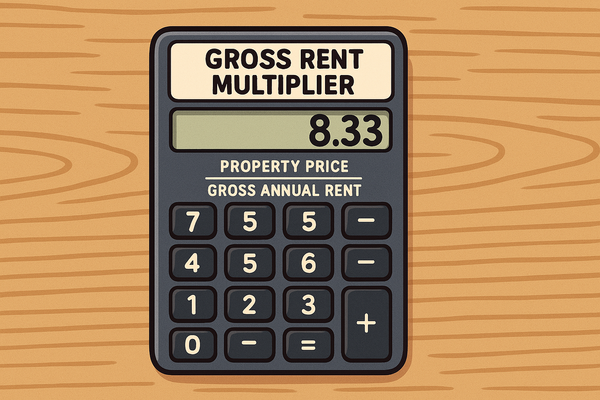New York Squatters Rights Guide: Understanding Adverse Possession Laws
New York state law allows someone to gain legal ownership of property through adverse possession after occupying it continuously for 10 years while meeting specific legal requirements.

From the homeowner who was arrested for changing the locks on her own house to keep squatters out, to the elderly couple unable to move into their $2 million dollar home due to a squatter who refused to leave, to the Staten Island case where a squatter lived rent-free for six years and then demanded payment to vacate, New York has seen some of the most egregious and headline-grabbing squatter cases in recent years.
These shocking stories have not only highlighted the complex and sometimes counterintuitive nature of New York's property laws but have also prompted significant legislative changes to better protect legitimate property owners while maintaining the historical legal doctrine of adverse possession that dates back centuries.
Introduction to Squatters' Rights in New York
- Definition of squatters vs. trespassers in New York: A squatter is someone who occupies property without legal title, right, or permission of the owner. Unlike trespassers who are temporary unauthorized visitors, squatters establish residency on the property they're occupying.
- Basic overview of adverse possession in New York: New York state law allows someone to gain legal ownership of property through adverse possession after occupying it continuously for 10 years while meeting specific legal requirements.
- Why property owners should understand these laws: New York property owners face unique challenges when dealing with unauthorized occupants, as the state's laws create a complex framework that can make removing squatters difficult and time-consuming.
- Historical purpose of adverse possession laws: These laws originated to ensure productive use of land and to resolve boundary disputes, but in modern New York, they've become increasingly controversial as squatter cases have gained media attention.
Squatter Snippet: Real Case from New York
In February 2024, Queens homeowner Adele Andaloro discovered someone had not only moved into her vacant $1 million Flushing home but had completely changed the locks.
When she called a locksmith to regain access to her property, police arrived and, incredibly, arrested Andaloro herself—not the squatter. The alleged squatter, Brian Rodriguez, had presented a fake lease from a nonexistent brokerage firm and claimed tenant rights.
This case sparked national outrage when video of the rightful owner being arrested went viral, ultimately prompting New York lawmakers to change state property law to specifically exclude squatters from tenant protections. Rodriguez eventually pleaded guilty to falsely reporting an incident and faces two years in prison.
Key Timeline: Statutory Period in New York
- Required occupation period: 10 years in New York
- Continuous possession requirement: Occupation must be without significant interruptions for the entire 10-year period
- Comparison with neighboring states:
- New Jersey: 30 years (20 years with color of title)
- Connecticut: 15 years
- Massachusetts: 20 years
- Timeline exceptions:
- Military service may toll (pause) the statutory period
- Legal disability (such as being a minor) may extend the time required
- Incarceration can impact the statutory period
CHART: Adverse Possession Timeline Comparison
| State | Required Years | Special Conditions |
|---|---|---|
| New York | 10 years | Requires payment of taxes, claim of right |
| New Jersey | 30 years (20 with color of title) | Cultivation or improvement required |
| Connecticut | 15 years | Must be open, visible, exclusive |
| Massachusetts | 20 years | Actual, open, notorious, exclusive, adverse |
| Pennsylvania | 21 years | Lower threshold for properties with buildings |
Quick Guide for Property Owners
New York's adverse possession laws were significantly strengthened for property owners in 2008 when the legislature amended the Real Property Actions & Proceedings Law to require a "reasonable basis for belief" in ownership.
This change directly responded to a controversial Court of Appeals ruling in Walling v. Przybylo (2006), which had determined that "actual knowledge that another person is the title owner does not defeat a claim to adverse possession."
Most shocking to many New Yorkers is that prior to this amendment, someone could knowingly occupy another's land and potentially gain legal title through adverse possession after 10 years.
- Know your timeline: Squatters can claim rights after 10 years of continuous occupation in New York
- Documentation matters: Keep property tax receipts, ownership records, and regular inspection logs
- Regular monitoring required: Check vacant properties at least quarterly and document each visit
- Legal obligation: Self-help eviction methods are illegal in New York State, even against known squatters
- Act quickly: Recent legislative changes have strengthened property owners' rights against squatters
- Proper notices: Follow the legal 10-day notice to quit before proceeding with formal eviction
Prevention: Protecting Your Property
New York courts evaluate numerous factors when determining adverse possession claims, including evidence of the property owner's diligence in monitoring their property. In particular, urban properties in New York City require more frequent monitoring than rural properties, as the dense population creates higher risks for unauthorized occupation.
Courts also look favorably on owners who take reasonable security measures to protect their property, including securing entry points and posting clear signage about ownership and prohibitions against trespassing.
- Regular inspections:
- Visit property at least quarterly for vacant properties
- Document each visit with dated photographs/notes
- Keep records of maintenance and repairs
- Effective security measures:
- Install quality locks on all entry points
- Consider security cameras or alarm systems
- Maintain proper lighting around the property
- Clear signage:
- Post "No Trespassing" signs visibly
- Mark property boundaries clearly
- Include owner contact information if appropriate
- Property management options:
- Hire professional management for vacant properties
- Consider rental options for long-term vacancies
- Documentation practices:
- Pay and keep records of property taxes
- Maintain utility connections
- Keep property insurance current
CHART: Property Risk Assessment Matrix
| Property Type | Risk Level | Recommended Prevention | Estimated Cost |
|---|---|---|---|
| Vacant Land | High | Property markers, regular inspections, tax payments | $-$$ |
| Abandoned Building | Very High | Security system, frequent inspections, proper signage | $$$-$$$$ |
| Seasonal Property | Medium | Security service, camera system, neighbor monitoring | $$-$$$ |
| Investment Property | Medium | Professional management, tenant screening, regular visits | $$-$$$ |
Removing Squatters: Step-by-Step Process
New York's process for removing squatters was significantly reformed following the high-profile Andaloro case in 2024. The amended Real Property Actions and Proceedings Law now explicitly states that "A tenant shall not include a squatter" and defines a squatter as "a person who enters onto or intrudes upon real property without the permission of the person entitled to possession, and continues to occupy the property without title, right or permission of the owner or owner's agent or a person entitled to possession."
This important distinction means squatters cannot claim tenant protections. Nevertheless, property owners must still follow proper legal channels rather than resorting to self-help methods, which remain illegal under New York law.
- Document the situation:
- Take photos/video of occupation
- Gather ownership documents
- Document any property damage
- Issue proper written notice to vacate (10-day notice)
- File appropriate legal complaint:
- "Petition for Special Proceedings" with appropriate court
- Include all required documentation and evidence
- Attend court hearing
- If successful, obtain "Warrant for Possession"
- Sheriff enforces removal, not property owner
- What NOT to do:
- Do not change locks yourself
- Do not shut off utilities
- Do not remove squatter's belongings
- Do not threaten or intimidate
- Do not use physical force
- Timeline expectations:
- Notice period: 10 days
- Court processing: 2-8 weeks
- Eviction enforcement: 14 days after judgment
CHART: Eviction Process Timeline
In New York, the eviction process follows strict timelines established in the Real Property Actions & Proceedings Law. Recent amendments in 2024 have expedited proceedings against squatters specifically, while maintaining due process requirements.
The courts that handle these proceedings include New York County Courts, Justice Courts, and District Courts, depending on the property's location. Importantly, New York City cases often take significantly longer than those in other parts of the state, with housing court cases in NYC taking an average of two years for resolution.
[Discovery of Squatter] → [Documentation: 1-2 days] → [Notice to Vacate: 10 days] →
[Court Filing: 1 day] → [Waiting for Hearing: 2-8 weeks] → [Court Hearing: 1 day] →
[If successful, Wait for Order: 1-14 days] → [Sheriff Enforcement: Up to 14 days] → [Property Returned]
Total estimated timeline: 1-4 months (longer in NYC)
Legal Requirements for Adverse Possession
New York courts evaluate adverse possession claims using the "OCEAN" criteria (Open, Continuous, Exclusive, Adverse/Hostile, Notorious), but with state-specific interpretations that have evolved through case law and legislative changes.
Most notably, the 2008 amendments to the Real Property Actions and Proceedings Law § 501 significantly changed the "hostile" element by requiring a "reasonable basis for the belief that the property belongs to the adverse possessor."
This change effectively overturned the Court of Appeals decision in Walling v. Przybylo, which had previously allowed adverse possession claims even when the possessor knew they weren't the rightful owner.
- Hostile Claim
- Requires a "reasonable basis for belief" in ownership
- Cannot knowingly occupy another's land (post-2008)
- Must be without permission from the legal owner
- Actual Possession
- Physical occupation of the property
- Using the property as a true owner would
- Evidence of maintenance and improvements
- Open and Notorious Possession
- Use must be visible to the community
- Cannot be hidden or secretive
- Obvious enough to alert a reasonable property owner
- Exclusive Possession
- Must prevent others from using the property
- Cannot share possession with strangers
- Must exercise control similar to true ownership
- Continuous Possession
- Uninterrupted for the full 10-year statutory period
- Seasonal or temporary absences may be permitted if consistent with typical ownership use
- No significant breaks in occupancy allowed
CHART: Adverse Possession Requirements Matrix
| Requirement | Required in New York? | Evidence Courts Accept | Common Pitfalls |
|---|---|---|---|
| Hostile Claim | Yes | Documentation showing belief of ownership | Knowing another is the true owner defeats claim |
| Actual Possession | Yes | Evidence of living on/using property | Occasional/minimal use insufficient |
| Open & Notorious | Yes | Visible improvements, community awareness | Hidden or secretive occupation fails |
| Exclusive | Yes | Control of access, preventing others' use | Sharing with public or strangers invalidates |
| Continuous | Yes | 10 years of regular occupation | Significant gaps restart the clock |
Frequently Asked Questions
- "Can I remove squatters myself?"
- No, self-help eviction is illegal in New York
- Even legitimate property owners must follow legal eviction processes
- Changing locks or removing belongings could result in your arrest, as seen in the Andaloro case
- "Do squatters have to pay property taxes?"
- Yes, payment of property taxes throughout the duration of possession is required for adverse possession in New York
- Tax payment strengthens an adverse possession claim
- Property owners should keep all tax payment records as evidence of ownership
- "What's the difference between a squatter and a trespasser?"
- Trespassers: Short-term unauthorized presence with no claim to property
- Squatters: Ongoing occupation with potential adverse possession claim
- New York's 2024 legislation specifically defines squatters as distinct from tenants
- "Who should I contact first - police or sheriff?"
- For immediate safety concerns: Police
- For eviction enforcement: Sheriff
- Only sheriffs, not police officers, have jurisdiction to remove squatters after court proceedings
- "Can squatters claim abandoned property?"
- Yes, if all adverse possession requirements are met for 10 years
- Abandonment may strengthen their claim
- Regular inspection and maintenance is crucial for vacant properties
- "How quickly can I evict a squatter?"
- Typical timeline outside NYC: 1-4 months
- In NYC: Can take up to 2 years
- Factors affecting timeline: court backlog, bankruptcy filings, tactical delays
CHART: Decision Tree for Property Owners
In New York, property owners must navigate a complex decision path when dealing with unauthorized occupants. The legal distinction between criminal trespass and civil squatting situations determines which authorities have jurisdiction.
New York law enforcement generally treats recent unauthorized entry (less than 24 hours) as criminal trespass, while established occupation requires civil proceedings. The 2024 legislative reforms have clarified these distinctions, but property owners must still be careful to follow proper channels.
Discovered Someone on Your Property
├── Emergency/Dangerous Situation? → Yes → Call Police
│ └── No ↓
├── Recent Entry (Less than 24 hours)? → Yes → Call Police (Trespasser)
│ └── No ↓
├── Evidence of Established Occupation? → Yes → Legal Eviction Process Required
│ └── No ↓
└── Uncertain Situation → Consult Attorney Before Taking Action
Recent Legislative Changes in New York
New York has enacted significant anti-squatter legislation in recent years, largely in response to high-profile cases that demonstrated weaknesses in existing laws. Most notably, the Andaloro case in Queens—where a homeowner was arrested while trying to remove squatters from her own property—sparked public outrage and prompted legislative action.
These changes reflect a growing recognition that existing laws had created an imbalance that sometimes favored unauthorized occupants over legitimate property owners.
- Recently Passed Laws:
- April 2024: As part of the 2025 fiscal year budget, New York passed new anti-squatter legislation that expedites the eviction process for squatters
- May 2024: Crucial amendment to the Real Property Actions and Proceedings Law clarified that "A tenant shall not include a squatter" and defined squatters as unauthorized occupants without permission
- Impact on property owners: Stronger protection against squatters and clearer legal distinction between tenants and squatters
- Effective date: May 2024
- Pending Legislation:
- Legislative Trends:
- Growing recognition of need to balance tenant protections with property rights
- Increased attention to squatter issues following high-profile cases
- More explicit differentiation between legitimate tenants and unauthorized occupants
State-Specific Considerations
- Color of Title in New York:
- Definition: Document that appears to grant ownership but contains technical defects
- Impact on statutory period: Required throughout the 10-year period
- Documentation requirements: Must have continuous claim of right
- Burden of proof requirements:
- Squatter must prove all elements of adverse possession
- Evidence standards in New York courts are strict, especially post-2008
- Property owners have stronger legal position due to recent reforms
- Recent legal developments:
- Anti-squatter provisions in 2025 fiscal budget
- Real Property Actions and Proceedings Law amendments
- Growing number of prosecutions for fraudulent squatting activities
- How New York differs from neighboring states:
- Shorter statutory period (10 years) than New Jersey (30/20 years)
- Stricter "claim of right" requirement than many states
- NYC has unique challenges due to housing density and court backlogs
CHART: New York vs. Neighboring States Comparison
| Factor | New York | New Jersey | Connecticut | Massachusetts | Pennsylvania |
|---|---|---|---|---|---|
| Statutory Period | 10 years | 30/20 years | 15 years | 20 years | 21 years |
| Color of Title Impact | Required | Reduces period | No reduction | No reduction | No reduction |
| Tax Payment Required | Yes | No | No | No | No |
| Special Conditions | Claim of right | Cultivation | None | None | None |
| Strictness Rating | 4 | 5 | 3 | 3 | 4 |
Advanced Legal Process
- Court proceedings in detail: Cases may be heard in New York County Court, Justice Court, District Court, or NYC Housing Court depending on location
- Evidence requirements: Documentation of ownership, tax payments, property monitoring, and improvements
- Potential outcomes and appeals: Court decisions can be appealed, extending the timeline significantly
- Monetary judgments and damages: Courts may award damages for property destruction or lost income
- Impact on property title: Successful adverse possession claims transfer legal title permanently
- Special provisions: Protections for legally incompetent individuals, including extended statutory periods
Real-World Examples
- Andaloro v. Rodriguez (2023-2024): Homeowner arrested for changing locks on squatters in her Queens home
- Landa Family v. Brett Flores (2023-2024): Elderly couple unable to move into their $2 million Douglaston home because former caretaker refused to leave
- Sentmier Estate Case (2024): Staten Island squatter lived in deceased man's home for six years, demanded payment to leave
- Walling v. Przybylo (2006): Landmark case that prompted 2008 legislative reforms requiring "reasonable basis for belief" in ownership
Resources
- Current New York Squatters Rights Laws:
- NY Real Property Actions & Proceedings Law § 501
- Last updated: May 2024
- Recent/Pending Legislation:
- NY State Senate Bill S.2366
- Bill status: In committee
Legal Disclaimer
DISCLAIMER: The information provided in this guide is for general informational purposes only and should not be construed as legal advice on any subject matter. The content contained herein does not establish an attorney-client relationship.
This guide about New York squatters' rights and adverse possession laws is intended to provide general information and should not be relied upon as legal advice. Laws and regulations regarding property rights, adverse possession, and eviction procedures vary by jurisdiction and may change over time. The information presented here may not reflect the most current legal developments or address your specific situation.
No reader should act or refrain from acting based on information in this guide without first seeking professional legal advice. Property owners dealing with squatters should consult with a qualified attorney licensed to practice in their jurisdiction for advice tailored to their particular circumstances.
The authors, publishers, and distributors of this guide expressly disclaim all liability in respect to actions taken or not taken based on any or all of the contents of this document. They shall not be responsible for any errors or omissions in this information or any consequences arising from its use.
This guide is provided "as is" without warranty of any kind, either express or implied, including but not limited to implied warranties of merchantability, fitness for a particular purpose, or non-infringement.
Copyright © 2025 LandlordDoc.com. All rights reserved.





